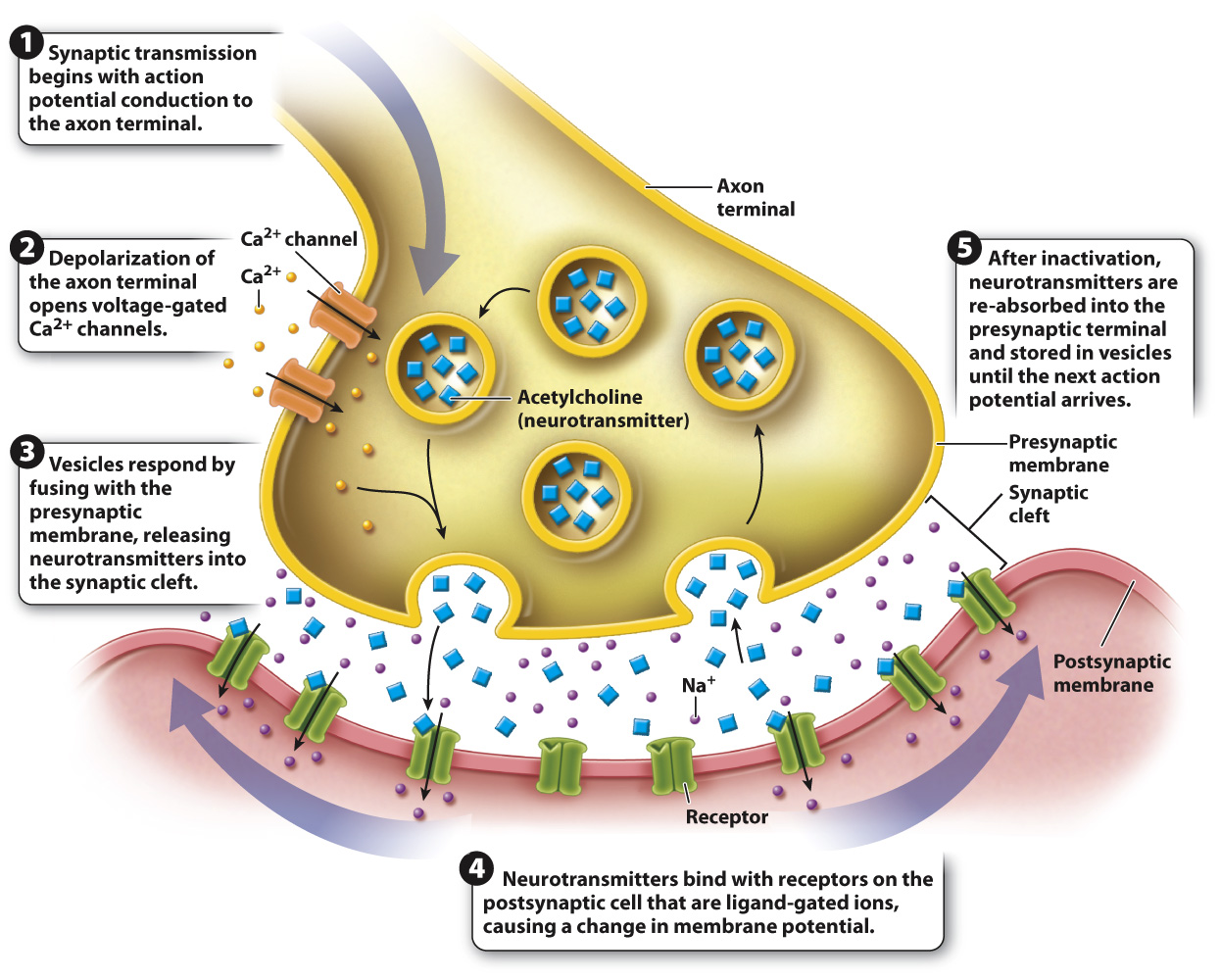Neurons communicate at synapses.
We have seen that nerve cells communicate at specialized junctions called synapses. There are two types of synapse, electrical and chemical. Electrical synapses provide direct electrical communication through gap junctions that form between neighboring cells (Chapters 10 and 28). They enable rapid communication but limit the ability to process and integrate information. Electrical synapses are found in the giant axons of squid, as well as in large motor nerves in fish used for escape swimming. Electrical synapses can also be found in the mammalian brain. They likely help to speed up information processing, but their role in the brain has not been well studied.
Chemical synapses are by far the more common type of synapse in animal nervous systems. The signals conveyed at chemical synapses are neurotransmitters contained within small vesicles in the axon terminal. When an action potential reaches the end of an axon (Fig. 35.12), the resulting depolarization induces voltage-gated Ca2+ ion channels to open. These channels are found only in the axon terminal membrane. Because of their higher concentration outside the cell, Ca2+ ions diffuse through these channels into the axon terminal. In response to the rise in Ca2+ concentration, the vesicles fuse with the presynaptic membrane and release neurotransmitter molecules into the synaptic cleft by exocytosis. The neurotransmitters diffuse rapidly across the cleft and bind to postsynaptic membrane receptors of the neighboring cell. The binding of neurotransmitters opens or closes ion channels, causing a change in the postsynaptic cell membrane potential that allows the signal to propagate along the next neuron.

FIG. 35.12 A chemical synapse. Neurons communicate with other neurons or with muscle cells by releasing neurotransmitters at a synapse.
These postsynaptic membrane receptors are called ligand-gated ion channels because when the neurotransmitter binds as a ligand it causes the ion channel to open. This allows specific ions to enter the postsynaptic cell, changing its membrane potential. Ligand-gated ion channels underlie the signal transmission that occurs at synapses, regulating the activity of nerve and muscle cells.
The neurotransmitter’s effect on the postsynaptic membrane ends shortly after binding. Neurotransmitters become unbound from the receptor, causing the ligand-gated ion channels to close, and neurotransmitters in the synaptic cleft are either broken down by deactivating enzymes or taken up again by the presynaptic cell and reassembled in newly formed vesicles.
Quick Check 3 How do the structural and chemical properties of the synapse ensure that communication proceeds in a single direction between nerve cells?
Quick Check 3 Answer
The presynaptic nerve cell has voltage-gated Ca2+ channels that open to cause neurotransmitter release from vesicles of the presynaptic cell. This results in neurotransmitter binding to postsynaptic ligand-gated ion channels, causing a change in the postsynaptic cell’s membrane potential, after which the neurotransmitter is inactivated or taken up by the presynaptic cell.
